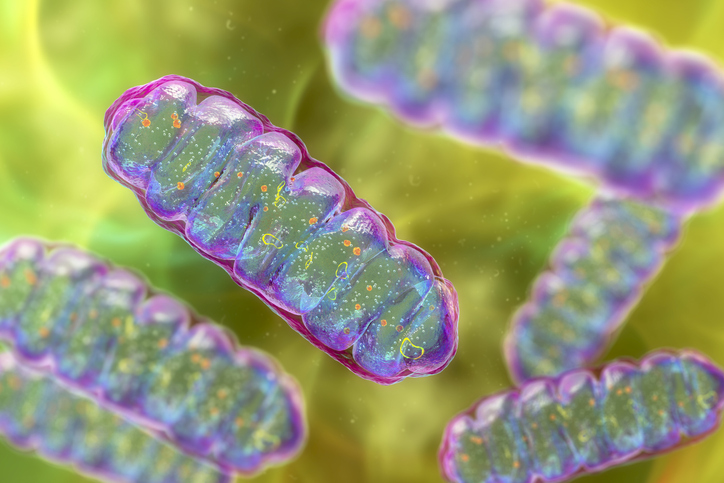Scientists at Scripps Research published findings that demonstrate how a mitochondrial protein structure is necessary to activate the cell’s integrated stress response (ISR), which is a critical pathway that helps cells maintain health. The researchers believe this mitochondrial structure, made up of the DELE1 protein, could serve as a target for future therapeutics for age-related diseases.
The team’s study “DELE1 oligomerization promotes integrated stress response activation” appears in Nature Structural & Molecular Biology.

“Mitochondria are dynamic organelles that continually respond to cellular stress. Recent studies have demonstrated that mitochondrial stress is relayed from mitochondria to the cytosol by the release of a proteolytic fragment of DELE1 that binds to the eIF2α kinase HRI to initiate integrated stress response (ISR) signaling,” write the investigators.
“We report the cryo-electron microscopy structure of the C-terminal cleavage product of human DELE1, which assembles into a high-order oligomer. The oligomer consists of eight DELE1 monomers that assemble with D4 symmetry via two sets of hydrophobic inter-subunit interactions. We identified the key residues involved in DELE1 oligomerization and confirmed their role in stabilizing the octamer in vitro and in cells using mutagenesis.
“We further show that assembly-impaired DELE1 mutants are compromised in their ability to induce HRI-dependent ISR activation in cell culture models. Together, our findings provide molecular insights into the activity of DELE1 and how it signals to promote ISR activity following mitochondrial insult.”
“Understanding the molecular details of this signaling pathway could help us potentially develop treatments for a range of diseases, such as neurodegenerative diseases, cancer and heart disease,” says first author Jie Yang, PhD, a postdoctoral fellow in the lab of Gabriel Lander, PhD, at Scripps Research.
Sense and respond to stressors
To maintain cellular function and health, mitochondria must continually sense and respond to stressors, such as viral infections and iron deficiency. However, their ability to do so decreases as people age.
“Just like every other part of our body, mitochondria age can become slightly less productive,” said co-author Kelsey Baron, a graduate student in the lab of Luke Wiseman at Scripps Research. “When you have this loss of mitochondrial productivity, your cells don’t have as much energy to fight different stressors, and many people believe that is a major trigger of neurodegeneration.”
One method by which mitochondria deal with stress is by activating the ISR. Prior studies have shown that the DELE1 protein is involved in activating this integrated stress response, but before now, little was known about the protein’s molecular structure. Characterizing DELE1’s structure is a key step towards understanding and treating diseases associated with mitochondrial stress.
The researchers focused on a fragment of DELE1—the C terminus—that is known to be actively involved in initiating the ISR. When they isolated this fragment, they were surprised to find that it was much heavier than expected, which suggested that multiple copies of the protein fragment were binding together. Using electron microscopy, the team showed that this protein complex (or oligomer) was a highly symmetrical cylinder composed of eight identical fragments—in other words, an octamer.
“It was completely unexpected that it was forming this much larger, oligomeric structure,” says study co-senior author Lander, professor in the department of integrative structural and computational Biology at Scripps Research. “It’s kind of like two four-legged spiders whose legs are intertwined to form this flexible cylindrical structure.”
The researchers captured more than 12,000 electron microscope images of the octamer and then used algorithms to produce a three-dimensional structural model. Then, by looking at the positions of different amino acids (the building blocks of proteins) within the structure, they were able to identify which amino acids are involved in binding and assembling the octamer.
To test whether this oligomerization of DELE1 is required to activate the ISR, the researchers then introduced mutations into some of the key amino acids, which would disrupt the ability of DELE1 to bind together. When they cultured cells that contained this mutated, un-oligomerizable version of DELE1, the cells were unable to activate the ISR, suggesting that oligomerization is critical to activating this stress signaling pathway.
The next step is to find ways to use this structural information to manipulate these pathways, notably in different diseases and disorders, the researchers say.



